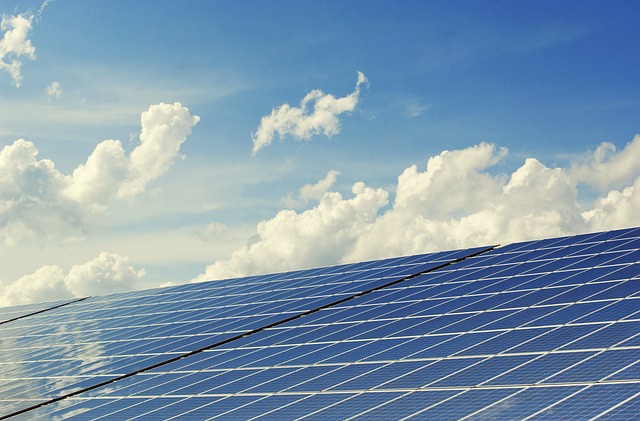“Maximize Efficiency: Essential Solar Wiring Tips to Minimize Energy Loss!”
Effective solar wiring is crucial for maximizing energy efficiency in solar power systems. Proper wiring techniques can significantly reduce energy loss, ensuring that more of the generated solar energy is utilized effectively. This introduction will explore essential tips for optimizing solar wiring, including selecting the right wire gauge, minimizing cable lengths, using high-quality connectors, and implementing proper grounding techniques. By following these guidelines, homeowners and installers can enhance the performance of solar installations, leading to increased energy savings and a more sustainable energy future.
Proper Sizing of Solar Wires
When it comes to optimizing the efficiency of a solar power system, one of the most critical yet often overlooked aspects is the proper sizing of solar wires. The choice of wire gauge can significantly impact energy loss, which ultimately affects the overall performance and return on investment of a solar installation. To understand why proper sizing is essential, it is important to consider the relationship between wire gauge, resistance, and energy loss.
As electricity flows through a wire, it encounters resistance, which can lead to energy loss in the form of heat. This phenomenon is described by Ohm’s Law, which states that the voltage drop across a conductor is proportional to the current flowing through it and the resistance of the wire. Therefore, if the wire is too thin for the amount of current it needs to carry, the resistance increases, resulting in a greater voltage drop and, consequently, more energy loss. This is particularly crucial in solar applications, where every watt of energy generated is valuable.
To mitigate these losses, it is essential to select the appropriate wire gauge based on the current that will flow through it. The American Wire Gauge (AWG) system provides a standardized way to determine wire sizes, with lower numbers indicating thicker wires. For instance, a 10 AWG wire can carry more current than a 12 AWG wire, making it a better choice for high-current applications. When sizing wires for a solar installation, it is advisable to consult the National Electrical Code (NEC) guidelines, which offer recommendations based on the specific requirements of solar systems.
In addition to current capacity, the length of the wire run plays a significant role in determining the appropriate wire size. Longer wire runs increase resistance, leading to higher voltage drops. Therefore, if the distance between the solar panels and the inverter or battery bank is substantial, it may be necessary to use a thicker wire to compensate for the increased resistance. A common rule of thumb is to keep voltage drop below 3% for optimal performance. By calculating the expected voltage drop based on wire length and current, installers can make informed decisions about wire sizing.
Moreover, environmental factors should also be taken into account when selecting solar wires. Temperature can affect the resistance of the wire; as temperatures rise, resistance increases, which can exacerbate energy loss. Therefore, it is prudent to choose wires that are rated for higher temperatures, especially in regions with extreme weather conditions. Additionally, using wires with proper insulation can protect against environmental factors such as moisture and UV exposure, further enhancing the longevity and efficiency of the solar system.
In conclusion, the proper sizing of solar wires is a fundamental aspect of reducing energy loss in solar power systems. By understanding the relationship between wire gauge, current capacity, and resistance, installers can make informed choices that optimize performance. Furthermore, considering factors such as wire length and environmental conditions ensures that the system operates efficiently over its lifespan. Ultimately, investing time and resources into selecting the right wire size not only enhances energy efficiency but also contributes to the overall success and sustainability of solar energy solutions. By prioritizing these considerations, solar system owners can maximize their energy production and enjoy the long-term benefits of renewable energy.
Minimizing Wire Length for Efficiency

When it comes to optimizing solar energy systems, one of the most critical factors to consider is the length of the wiring used in the installation. Minimizing wire length is essential for reducing energy loss, which can significantly impact the overall efficiency of a solar power system. The longer the wire, the greater the resistance encountered, leading to energy dissipation in the form of heat. This phenomenon, known as voltage drop, can diminish the amount of energy that reaches the inverter and, ultimately, the electrical grid or battery storage. Therefore, careful planning and execution in the wiring phase can yield substantial benefits.
To begin with, it is crucial to design the layout of the solar array with wire length in mind. By strategically positioning the solar panels closer to the inverter or battery storage, you can minimize the distance that electricity must travel. This not only reduces the amount of wire needed but also helps to maintain a higher voltage level throughout the system. When planning the layout, consider the orientation and tilt of the panels, as well as the location of the inverter. A well-thought-out arrangement can lead to significant savings in both material costs and energy losses.
Moreover, selecting the appropriate gauge of wire is another vital aspect of minimizing energy loss. Thicker wires have lower resistance, which means they can carry more current with less voltage drop. While it may be tempting to use thinner wires to save on costs, this can lead to inefficiencies that outweigh any initial savings. It is essential to consult the National Electrical Code (NEC) guidelines and consider the specific requirements of your solar system to determine the correct wire gauge. By investing in the right materials from the outset, you can ensure that your system operates at peak efficiency.
In addition to wire gauge, the type of wire used can also influence energy loss. For solar applications, using high-quality, UV-resistant wire is advisable, as it will withstand the elements and maintain its integrity over time. Copper wire is often preferred due to its excellent conductivity, but aluminum wire can also be a viable option if properly sized. Regardless of the material chosen, ensuring that the wire is rated for outdoor use and can handle the expected current load is essential for long-term performance.
Furthermore, it is important to pay attention to the connections made throughout the system. Poorly executed connections can introduce additional resistance, leading to further energy loss. Using high-quality connectors and ensuring that all connections are tight and secure can help mitigate this issue. Regular maintenance checks can also identify any potential problems before they escalate, ensuring that the system remains efficient over its lifespan.
Finally, while minimizing wire length is a crucial step in reducing energy loss, it is equally important to consider the entire system holistically. Factors such as shading, panel orientation, and inverter efficiency all play a role in the overall performance of a solar energy system. By taking a comprehensive approach to design and installation, you can maximize energy production and minimize losses, ultimately leading to a more efficient and cost-effective solar solution. In conclusion, by focusing on minimizing wire length, selecting appropriate materials, ensuring quality connections, and considering the system as a whole, you can significantly enhance the efficiency of your solar energy installation, paving the way for a more sustainable future.
Using High-Quality Connectors
When it comes to optimizing solar energy systems, one of the most critical yet often overlooked aspects is the use of high-quality connectors. These components play a pivotal role in ensuring that the energy generated by solar panels is transmitted efficiently to inverters and ultimately to the electrical grid or battery storage. By investing in superior connectors, homeowners and businesses can significantly reduce energy loss, thereby maximizing the overall efficiency of their solar installations.
To begin with, high-quality connectors are designed to minimize resistance in the electrical circuit. Resistance can lead to energy loss in the form of heat, which not only diminishes the amount of usable energy but can also contribute to wear and tear on the system over time. By selecting connectors that are made from high-grade materials, such as copper or gold-plated contacts, users can ensure a more reliable and efficient connection. These materials are known for their excellent conductivity, which helps to maintain optimal energy flow from the solar panels to the inverter.
Moreover, the durability of connectors is another crucial factor that cannot be overlooked. Solar energy systems are often exposed to harsh environmental conditions, including extreme temperatures, moisture, and UV radiation. High-quality connectors are typically designed to withstand these elements, ensuring that they do not degrade or corrode over time. This resilience not only prolongs the lifespan of the connectors themselves but also helps to maintain the integrity of the entire solar energy system. In contrast, inferior connectors may fail prematurely, leading to increased maintenance costs and potential energy loss.
In addition to material quality and durability, the design of connectors also plays a significant role in reducing energy loss. Connectors that feature a secure locking mechanism can prevent accidental disconnections, which can disrupt the flow of electricity and lead to inefficiencies. Furthermore, connectors that are designed for easy installation can help ensure that the connections are made correctly, reducing the likelihood of human error during setup. This attention to detail in both design and installation can make a substantial difference in the overall performance of a solar energy system.
Transitioning from the importance of quality to practical application, it is essential to consider the compatibility of connectors with the specific components of a solar energy system. Different solar panels and inverters may require specific types of connectors, and using the wrong type can lead to inefficiencies or even system failure. Therefore, it is advisable to consult with a professional or refer to manufacturer specifications when selecting connectors. This ensures that all components work harmoniously together, further reducing the risk of energy loss.
Finally, regular maintenance and inspection of connectors should not be neglected. Over time, even high-quality connectors can accumulate dirt, dust, or moisture, which can impede their performance. By routinely checking and cleaning these connections, users can ensure that their solar energy systems operate at peak efficiency. This proactive approach not only helps to identify potential issues before they escalate but also reinforces the importance of high-quality components in maintaining an efficient solar energy system.
In conclusion, the use of high-quality connectors is a fundamental aspect of reducing energy loss in solar energy systems. By focusing on materials, durability, design, compatibility, and maintenance, users can significantly enhance the efficiency and longevity of their solar installations. Ultimately, investing in superior connectors is a wise decision that pays dividends in energy savings and system performance.
Regular Maintenance and Inspections
Regular maintenance and inspections are crucial components in ensuring the efficiency and longevity of solar energy systems. As solar technology continues to evolve, the importance of routine checks cannot be overstated. By implementing a consistent maintenance schedule, homeowners and businesses can significantly reduce energy loss, thereby maximizing the return on their investment in solar energy.
To begin with, it is essential to understand that solar panels, like any other technology, require periodic attention to function optimally. Dust, dirt, and debris can accumulate on the surface of solar panels, obstructing sunlight and reducing their efficiency. Therefore, regular cleaning is a fundamental aspect of maintenance. Depending on the local environment, panels may need to be cleaned several times a year. In areas with heavy rainfall, natural washing may suffice, but in drier climates, manual cleaning may be necessary to ensure that panels are free from obstructions.
In addition to cleaning, inspecting the physical condition of the solar panels is vital. Over time, panels can suffer from wear and tear due to environmental factors such as hail, wind, and extreme temperatures. During inspections, it is important to look for cracks, discoloration, or any signs of physical damage. Identifying these issues early can prevent more significant problems down the line, such as reduced energy output or complete system failure. Furthermore, checking the mounting hardware and connections is equally important, as loose or corroded components can lead to energy loss and safety hazards.
Moreover, the inverter, which converts the direct current (DC) generated by solar panels into alternating current (AC) for home use, requires regular attention. Inverters typically have a lifespan of about five to ten years, and their performance can degrade over time. Routine inspections should include checking the inverter’s display for error messages and ensuring that it is functioning within its optimal range. If any irregularities are detected, it may be necessary to consult a professional for repairs or replacement.
Another critical aspect of maintenance involves monitoring the overall system performance. Homeowners should keep track of their energy production and consumption through monitoring systems that many solar installations offer. By analyzing this data, it becomes easier to identify any discrepancies that may indicate a problem. For instance, a sudden drop in energy production could signal an issue with the panels or inverter, prompting further investigation.
In addition to these practical steps, it is advisable to engage with professional solar service providers for comprehensive inspections. These experts can conduct thorough assessments that may go beyond the capabilities of a typical homeowner. They can identify potential issues that may not be immediately visible and provide recommendations for repairs or upgrades. Engaging professionals not only ensures that the system is functioning efficiently but also helps in maintaining warranties and compliance with local regulations.
In conclusion, regular maintenance and inspections are indispensable for reducing energy loss in solar energy systems. By committing to a routine of cleaning, inspecting, and monitoring, homeowners and businesses can enhance the performance and longevity of their solar installations. This proactive approach not only maximizes energy production but also contributes to the overall sustainability goals of reducing reliance on fossil fuels. Ultimately, investing time and resources into regular maintenance will yield significant benefits, ensuring that solar energy systems operate at peak efficiency for years to come.
Q&A
1. **Question:** What is one effective way to minimize energy loss in solar wiring?
**Answer:** Use larger gauge wires to reduce resistance and minimize voltage drop.
2. **Question:** How can the layout of solar panels impact energy loss?
**Answer:** Arrange panels to minimize the distance between them and the inverter, reducing the length of wiring needed.
3. **Question:** What type of connectors should be used to ensure efficient energy transfer?
**Answer:** Use high-quality, weather-resistant connectors to prevent corrosion and maintain a solid electrical connection.
4. **Question:** Why is it important to regularly inspect solar wiring?
**Answer:** Regular inspections can identify wear, damage, or loose connections that can lead to increased energy loss.
Conclusion
To reduce energy loss in solar wiring, ensure that all connections are secure and properly insulated, use appropriately sized wires to minimize resistance, and keep wiring runs as short as possible. Additionally, consider using high-quality components and regularly inspect the system for wear or damage. Implementing these tips can enhance the efficiency of a solar power system and maximize energy output.



